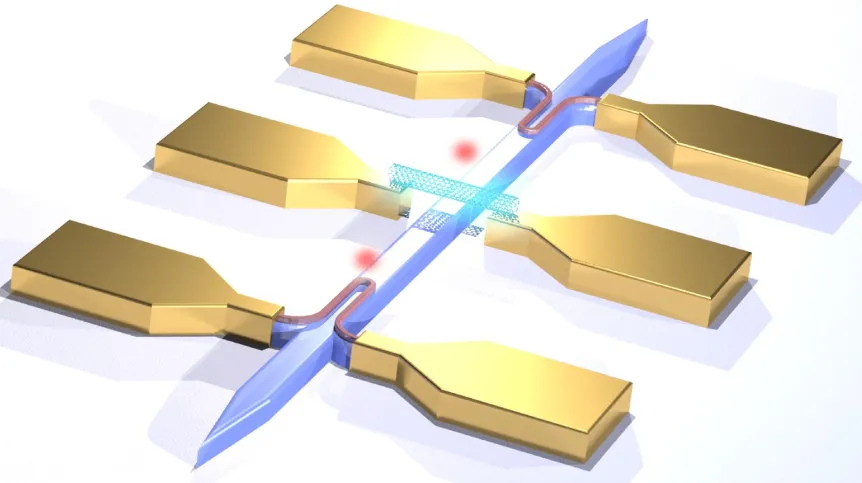
This chip is so small that it can not be seen with the naked eye. But it has impressive capabilities: it not only emits single photons under the influence of electrical current, but also detects them. This microscopic device - in the development of which Polish researcher was involved - is a big step on the way to quantum computers.
The team from Germany and Russia - led by Prof. Wolfram Pernice - developed a chip with a diameter of just a fraction of a millimetre. It contains a nanodevice emitting single photons, optic fibre, as well as tiny photon sensors. It is the world\'s first electrically powered quantum photonic integrated circuit. One of the scientists involved in the research described in the "Nature Photonics" was Dr. Karolina Słowik from Nicolaus Copernicus University in Toruń.
A common light bulb or LED emits a stream of photons, particles of light. In this stream, the remarkable quantum properties of each photon are lost. Completely new opportunities associated with the use of these particles are gained, however, if the photons are emitted one by one. And these quantum follies of individual particles - effects invisible on a larger scale - give hope for the development of quantum computers. Such computers could process information with unimaginable speed and efficiency, which we certainly will not achieve by simply miniaturising the systems that we already know.
One of the many milestones on the road to quantum computers is the ability to produce single particles of light, encoding information in them and detect them.
Single photon sources and detectors are not a new invention - they can be found in many laboratories worldwide. But these systems are normally large, they occupy square meters on optical tables. It\'s like building a factory the size of a big city just to produce pins. No wonder that scientists have been working on the miniaturization of devices producing and detecting single photons. The achievement of Pernice\'s team is impressive: the researchers managed to squeeze all this machinery to the size of a tiny chip, almost invisible to the naked eye.
"Part of this system are carbon nanotubes - a hundred thousand times thinner than the diameter of a human hair. Under the influence of electrical current they emit single photons that travel through tiny fibre-optics to detectors" - said in an interview with PAP Dr. Karolina Słowik from Nicolaus Copernicus University. She noted that for the system to function, it must be cooled with liquid helium, because detection of weak signals, such as a single particle of light, is more efficient at temperatures close to absolute zero.
"The size of the entire system is a few hundred microns - a fraction of a millimetre. The device is small and can be used to build larger structures" - the researcher told PAP. For example, photons generated in such a device could be encoded to process information - for example by passing the photons through optical elements. This, in turn, would be a method of performing algorithms.
Dr. Słowik noted that before the experiment it was not clear whether the device would actually emits single photons, or impulses of another kind. The task of the researcher from the Nicolaus Copernicus University in the framework of the project was to develop statistical data from the experiment and determine how often particles are emitted exactly one at a time.
According to Karolina Słowik, construction of a quantum computer is a dream of scientists that may come true. "The work on quantum computer is of interested to private companies such as Google and IBM that invest money in research on the subject. It really could be achievable" - said the researcher.
PAP - Science and Scholarship in Poland, Ludwika Tomala
lt/ agt/ mrt/
tr. RL













